Details
introduction:
The "Guard III" anti-UAV defense system consists of a radio detection and positioning subsystem, a radio direction finding detection subsystem, a radar detection subsystem, an optoelectronic tracking subsystem, a navigation inducement subsystem, a radio interference countermeasure subsystem and a portable ( Hand-held) radio interference countermeasure subsystem and other equipment and RGS1000 low-altitude early warning and control platform are jointly composed. The system consists of radio detection and positioning subsystem, radio direction finding detection subsystem and radar detection subsystem to detect, identify, locate and track low, slow and small UAV targets, guide the photoelectric tracking subsystem to perform video forensics, and guide the navigation and inducement subsystem. The target is handled by the system or the radio interference countermeasure subsystem. Comprehensive use of multi-spectrum detection, heterogeneous system interconnection, multi-source data fusion, intelligent analysis and decision-making and other technologies to achieve early detection, fast locking, stable tracking, accurate identification and strong countermeasures of low-altitude UAVs, and multiple detection methods complement each other , a variety of frequency band interference interception, which can effectively protect the low-altitude safety of key places all day, all time, and all dimensions.
The system is mainly equipped for public security, armed police, army, government and other users, and is often used for the prevention and control of drone targets such as prisons/detention centers, large gatherings, and public places.
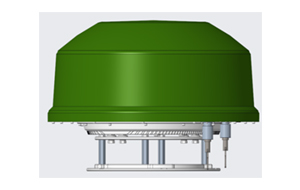
Product Appearance Drawing of Radio Detection Subsystem (Reference)
The radio detection subsystem is a passive detection method, and the system itself does not emit any radio waves. The system can passively receive the image transmission signal and remote control signal of the target UAV, search, collect, find direction and intersect and locate the signal. There are low-slow and small drones invading the defense area.
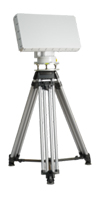
Product Appearance Drawing of Radar Detection Subsystem (Reference)
The radar detection subsystem detects low, slow and small UAVs by transmitting radio waves and detecting echoes. The radar echo signals of targets in the airspace are collected by the antenna feeder system, filtered, amplified, and down-frequency processed by the radio frequency components and transmitted to the signal. processing board. The signal processing board performs signal accumulation, clutter elimination, etc., and reports the processed radar detection target angle, speed, distance and other information to the data processor and system terminal.
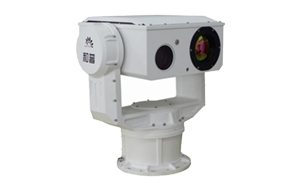
Photoelectric tracking subsystem product appearance diagram (reference)
The optoelectronic tracking subsystem uses visible light cameras and infrared thermal imagers to automatically track and lock low-slow and small UAV targets, and analyzes the morphological features or motion features of the targets through image acquisition and processing to achieve target detection, automatic identification, locking and tracking, and video recording. Review and boot countermeasure devices. Provide command and decision makers with intuitive real-time image information of the target. Under the guidance of the distance, azimuth, and altitude information provided by the command and control system, the drone can be found, tracked, and automatically identified. Optoelectronic equipment can also conduct autonomous search and detection of short-range low-altitude flying objects, and implement auxiliary low-altitude surveillance.
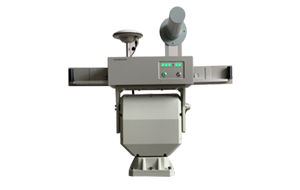
Navigation and inducement subsystem product appearance diagram (reference)
The navigation inducement subsystem simulates the real satellite navigation signal with high precision, controls the positioning output of the low-slow and small UAV navigation system, and sends false geographic coordinates to the UAV, so that it cannot use the navigation system to determine its own position and deviate from the predetermined route. Induce the flight control system to generate wrong flight control instructions, and then control the UAV to control the flight track, make it fall or control the UAV target to the space position set by the user for strike.

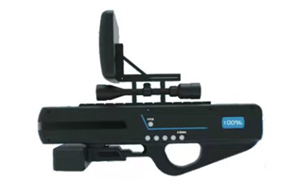
Product appearance diagram of radio interference countermeasure subsystem (reference)
The radio interference counter system uses radio frequency technology to interfere with the flight control channels, GNSS signals and image transmission signals of low-slow and small UAVs. UAVs entering the coverage area cannot obtain satellite positioning information. Both the control signal and the image transmission signal to the ground controller were cut off, forcing the drone to return or land and lose the image transmission function.
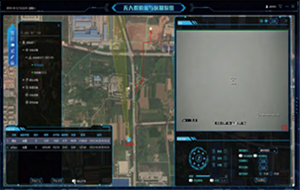
RGS1000 low-altitude early warning and control platform (reference)
The RGS1000 low-altitude early warning and control platform can be connected to the radio detection sub-system, radar detection sub-system, photoelectric tracking sub-system, radio countermeasure equipment and other UAV detection, identification and countermeasure equipment at the same time. A comprehensive visual anti-UAV command and management platform that integrates the functions of situation display and control, alarm linkage, decision-making and command, record and evidence collection, and event retrieval.
Features:
radio detection subsystem
1) Passive radar, no radiation, hidden work, long-term use will not cause any adverse effects on the human body;
2) It can monitor and track UAV and flight control signals at the same time, and the detection speed is fast, which is convenient for early warning and disposal;
3) 360° omnidirectional coverage, which can capture UAV image transmission and remote control flight control signals hidden between buildings and trees.
radar detection subsystem
1) The ability to monitor low-altitude, slow and small targets, flexible deployment, fully automatic, and all-weather work;
2) The three-coordinate primary radar has altimetry capability;
3) Support unattended operation, reduce the difficulty of work, and avoid the interference of electromagnetic radiation to operators.
Photoelectric tracking subsystem
1) It can carry a long-focus visible light camera, a large-diameter infrared thermal imager, and optional sensing modules such as laser illuminator, laser ranging, positioning and navigation, digital compass, etc., to achieve ultra-long-distance target observation;
2) It can integrate high-definition visible light, cooled/uncooled thermal imaging, and laser illuminators. The advantages of multi-band detection are complementary, the combination of active and passive detection, and multi-source data aggregation and fusion processing. monitoring needs;
3) The automatic tracking module designed with a variety of advanced target acquisition algorithms and tracking algorithms, supplemented by high-precision servo control, ensures stable tracking of the target during fast flight and direction change.
Navigational inducement subsystem
1) GPS/GLONASS/BDS/Galileo and other satellite navigation civil frequency bands, covering a wide range;
2) It can drive the target UAV away in the designated direction, induce the UAV to the designated area and make it make a forced landing;
3) Send repressive navigation interference signals so that the UAV cannot receive navigation and positioning signals to achieve defense purposes.
Radio Interference Countermeasure Subsystem
1) It has the ability to effectively interfere with the signals of general-purpose UAVs and model-modified UAVs, causing them to return or make forced landings;
2) The frequency range of navigation signal processing includes: GPS, GLONASS, Beidou, Galileo and other navigation systems;
3) The working mode of data link processing and navigation signal processing can be freely selected or set by the user.
Application scenarios:
It is mainly used for low-altitude security protection in key places such as bases, airports, prisons, nuclear, biological and chemical industries, conference centers, office buildings, oil fields, and oil depots.


















